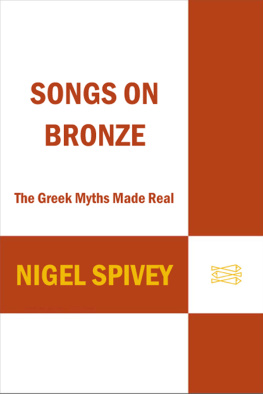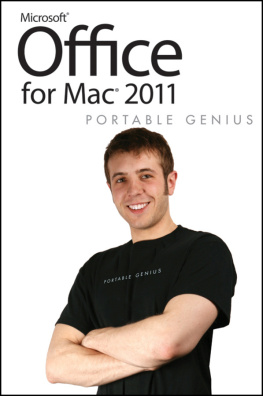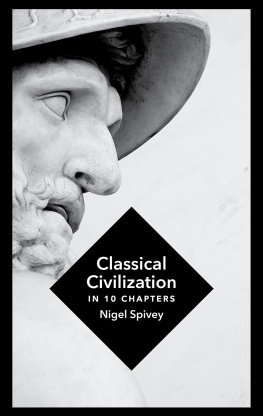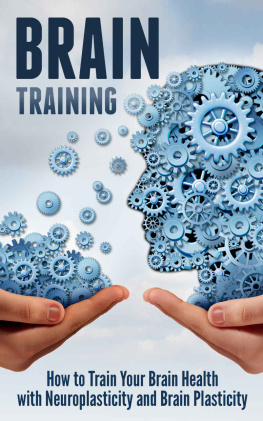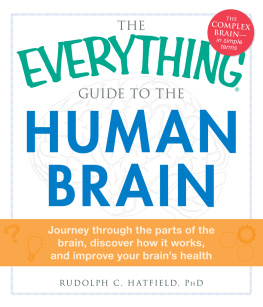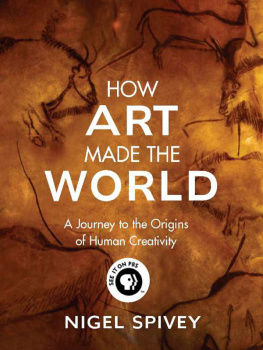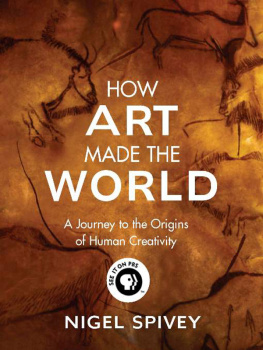2020 The Massachusetts Institute of Technology.
All rights reserved. No part of this book may be reproduced in any form by any electronic or mechanical means (including photocopying, recording, or information storage and retrieval) without permission in writing from the publisher.
Library of Congress Cataloging-in-Publication Data is available.
For Daddy Ossie, Grampa Bill, Uncle Nat, Dion, Jennie Mama, Sean, Glynn, Gramma Donna, Jon, Chris, Aunt Sarah, Dick, Guy, Michael, Isamu, Bruce, Jeff, and Dennis
Acknowledgments
As with any major project, there are countless intellectual influences that contributed to my writing of this book. My parents, my sister, and Steve helped turn me into the kind of person who would write a book like this. Specific suggested topics, feedback, and revisions were offered by three anonymous reviewers retained by MIT Press, and also by my friends and colleagues Ramesh Balasubramaniam, Mahzarin Banaji, Ben Bergen, Barbara Finlay, Chris Kello, Paul Maglio, Teenie Matlock, Dave Noelle, Paul Smaldino, and Georg Theiner, among others. Elizabeth Stark was especially helpful at helping me strike the right tone. Over the years, I have drawn inspiration for this work from my conversations with my students and with experts, including Larry Barsalou, Claudia Carello, Tony Chemero, Andy Clark, Rick Dale, Shimon Edelman, Jeff Elman, Riccardo Fusaroli, Ray Gibbs, Scott Jordan, Gnther Knoblich, Jay McClelland, Ken McRae, Claire Michaels, Daniel Richardson, Mike Tanenhaus, Michael Turvey, Guy Van Orden, Jeff Yoshimi, and also my son Samuel Rex Spivey (find him on soundcloud.com). My wife, Cynthia, was extremely insightful at the metatheoretical level. Without her encouragement, this book would have been completely unreadable by a general audience, and it wouldnt have the directions for use sections. The guidance from Phil Laughlin, my acquisitions editor at MIT Press, was crucial in allowing me to see a light at the end of the tunnel. And finally, I am grateful to Melody Negron at Westchester Publishing Services, and Hal Henglein, who helped me avoid numerous embarrassing mistakes (including reducing the number of sentences that start with the word And.)
Prologue: Who You Might Think You Are Now
Do you know who you are?
Keaton Henson, You Dont Know How Lucky You Are
The phrase who you are could refer to multiple things. For some people, it might refer to their conscious awareness. For others, it might refer to their self-image or perhaps to their personality. Still others might conceive of who they are as referring to their personal reputation among their family or their community. Who you are can be many things, and I encourage you to think of it as all these things and more. In this book, we will go on a journey through an ever-expanding definition of the physical material that makes up who you are. Like a Venn diagram that starts out small, as a circle that contains the stuff that makes you you, initially it might contain only a particular region of your brain. Then, as we progress through the chapters, that circle cannot help but expand to include your whole brain, then your whole body, then more and more. For any learning exercise, starting out small is good.
Many people operate under an unspoken assumption that who they really are is something deep inside them. We develop this impression, in part, because sometimes we have to put on a social mask that is somewhat different from how we really feel or how we really want to behave. A popular metaphor here is that of peeling an onion. Each surface that looks as if it might be who you are can actually be peeled away to reveal a more core version of who you are, and it, too, can be peeled away to reveal something even more central. If you start with that assumed sense of who you are, something deep inside, then the chapters in this book are actually designed to reverse that curious metaphor incrementally. By carefully analyzing the content and makeup of each of those layers, we will in fact see that they are all part of who you are. After all, if that social mask were not part of who you are, then you wouldnt be able to use it so effortlessly, would you? And, believe it or not, there are quite a few more layers to your onion than you might think.
Knowing who you are, and embracing all those layers, is important because an inaccurate conception of who you are can lead to decisions and actions that hinder or harm you. Imagine that an onion somehow thought that only its inner bulb was who it was. Then it might neglect its outer layers, not feeding those cells as it grew. What a sick and sad onion that would be! When you know in your heart that something outside your body is actually part of you, such as a child, a pet, or even a favorite book, you take good care of that something because by doing so you are taking care of your self. If you take good care of all those different parts of your expanded self, then you will live a better and longer life.
This book is specifically designed to shake up those narrow assumptions about who you are, what stuff makes you you. It does not do it with poetic pronouncements that sound, on their own, like they might be true, although there might be a few flowery turns of phrase here and there. It does not do it with philosophical thought experiments that pump your intuitions up out of the ground like subterranean water, although you will encounter a couple of those. The primary tool of persuasion in this book is scientific study. Science is the best method by which we humans have been able to determine reliable facts about how this world works. So many other methods have relied too much on poetry and intuition, and have a bad habit of making failed predictions or being proven wrong in other waysusually by science. But you do not have to be a scientist to enjoy what is being delivered in this book. The scientific studies are described in just enough detail for you to understand and trust the results that were obtained, and if you want to look up and read the actual scientific studies that I describe here, each chapter subheading has its own section in the Notes at the end of the book, with some more in-depth discussion and lots of references.
Here is what this book has in store for you. As each chapter moves along, it will stretch and expand one particular definition of who you are, or what the self is. Each chapters minor stretching or expansion is designed to be small and gentle enough that it should not be too painful, mind-boggling, or unbelievable. Chapter 1 is designed to help you let go of your biases and assumptions about who you are, so you can approach the chapters that follow with an open mind. As you work your way from chapter 2 to chapter 3 to chapter 4, the examples of scientific experiments will give you compelling evidence for expanding your definition of your mind to include all your brain and all your body. If that sounds obvious to you right now, then you are exactly the kind of person who should be reading this book. As you work your way from chapter 5 to chapter 6, you will encounter powerful scientific evidence for treating the tools and people in your environment as additional parts of who you are. If that sounds ridiculous to you right now, then you are exactly the kind of person who should be reading this book. You just might find yourself convinced to change your mind about what your mind is. Then, if you make it agreeably through chapters 7 and 8and, to be honest, many readers will have objections thereyou will see scientific evidence for nonhuman life and even nonliving matter being


